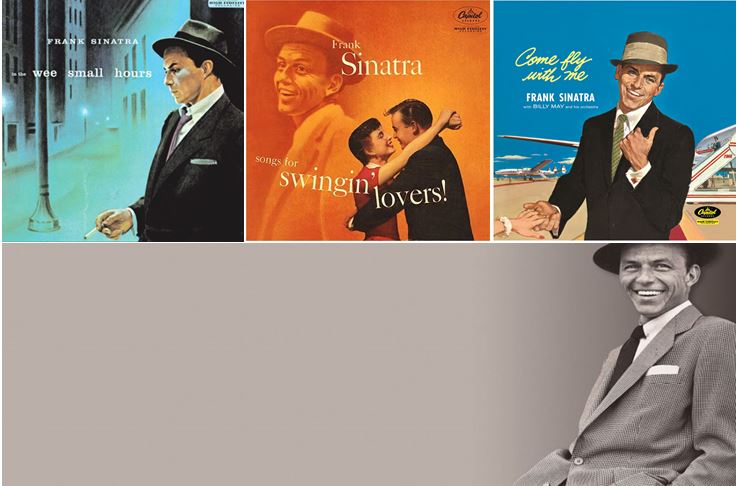
By Matt Micucci
A concept album is recognised as an album in which the tracks are tied together by one theme both lyrically and musically, as opposed to the typical studio album which is composed of tracks that are unconnected.
This is a practice that is tied to the rock and roll genre, particularly that of the sixties and the seventies, and with bands such as The Beatles, The Who and Pink Floyd. But really, it is just as relevant to jazz music, which is indeed where the concept albums came from.
It is Frank Sinatra himself that is credited as the artist that first released a studio album that can be recognized as having all the traits of a concept album. When in 1946 he finally broke free from Tommy Dorsey, he embarked on a solo stellar career and signed a recording contract with Columbia Records. His first album was The Voice of Frank Sinatra, which became instantly very popular, reaching the number one spot on the Billboard 200 chart, where it stayed for the following seven weeks.
The Voice of Frank Sinatra is evidently tied together by moods and atmospheres dictated by cohesive music, fruit of the arrangements by Alex Stordahl. Up to that point, artists and musicians had limited themselves to recording a healthy mixture of hits from their repertoires, or songs by just one composer. This probably hints at the fact that, more than a concept album at such, The Voice of Frank Sinatra shaped the cohesion that an album in general is expected to have in order to seem properly structured and representative of the style of the artist, musician or band in the artistic times in which it was recorded and released.
Sinatra would continue to release concept albums throughout his entire career, particularly in the fifties, on Capitol Records. In April 1955, he released one of his most critically acclaimed albums, In the Wee Small Hours. This is an album only composed of songs dealing with themes such as introspection, lost love, failed relationships, depression and loneliness. Its concept is reflected in the artwork, which sees the crooner looking gloomy and smoking a cigarette in a deserted streen lit up by blue street lights.
A year later, the concept would be more light hearted and representative of Sinatra’s “easy swing” style. Composed by hit tracks and beloved pop standards, Songs for Swingin’ Lovers was more exhuberant than its melancholic predecessor. It was released in 1956, and was even Sinatra’s first album to ever top the UK Album Charts. Even the artwork is interestingly different. While that of In the Wee Small Hours was dominated by blue tones, here the dominating orange theme hints at a sunnier and happier mood and atmosphere.
In the Wee Small Hours and Songs for Swingin’ Lovers in particular represent how Frank Sinatra alternated between concepts for his albums. This can be noticed in his entired discography.
The happier concepts that followed were, for instance, 1958’s Come Fly With Me, one of his jazzier albums, composed only of tracks dealing with travelling and designed as a musical trip around the world. His most commercially successful album Come Dance With Me!, released in January 1959, which spent two and a half years at the top of the Billboards 200 chart, is not only tied together by arguably the hardest swinging sound of any of Sinatra’s studio albums, but also by the songs themselves, often revolving around dancing, romancing and lively night-life.
Then there were the gloomier and melancholic ones. 1957’s Where Are You?, the first Sinatra studio album recorded in stereo, is dominated by Nelson Riddle’s string orchestration, and reprises many of the themes of In the Wee Small Hours. A year later, he released the even darker Frank Sinatra Sings for Only the Lonely, where the famous album’s front cover, painted by Nicholas Volpe, features Sinatra as a sullen, Pagliacci-like clown. The tone of this particular album was also defined by personal motifs. At the time of its recording, Sinatra’s tumultuous marriage with Ava Garner had ended and Nelson Riddle had just suffered the death of his mother and his daughter.
